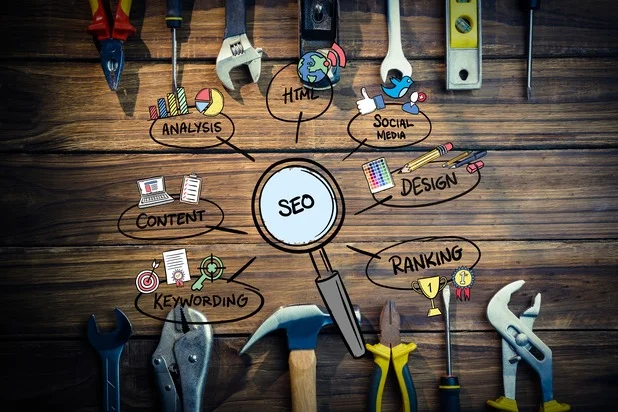As the world becomes increasingly conscious of human activities’ environmental impact, businesses are taking more responsibility for their carbon footprint. One area that has received increasing attention in recent years is web design. With the internet playing an ever more critical role in commerce and communication, the environmental impact of websites has become a key concern for many businesses. In this article, we’ll explore the importance of eco-friendly web design for sustainable business and offer tips for optimizing your website’s environmental performance.
Why Eco-Friendly Web Design Matters
The internet significantly contributes to global carbon emissions, with estimates suggesting it is responsible for up to 3.7% of global greenhouse gas emissions. This figure is expected to rise as more people come online and the demand for data-intensive applications such as video streaming and cloud computing grows. As a result, businesses are under increasing pressure to reduce their online carbon footprint.
One area where businesses can make a significant impact is in the design and operation of their websites. By adopting eco-friendly web design practices, companies can reduce the energy consumption and carbon emissions associated with their online presence. This can reduce their overall carbon footprint, improve their reputation as a sustainable business, and save them money on their energy bills.
The Benefits of Eco-Friendly Web Design
There are many benefits to adopting eco-friendly web design practices. Here are a few:
Reduced Energy Consumption
By optimizing your website’s design and code, you can reduce the amount of energy it consumes. This can help to lower your energy bills and reduce your carbon footprint.
Improved Website Performance
An eco-friendly website is often faster, requiring less energy to load and operate. This can lead to a better user experience and improved search engine rankings.
Enhanced Brand Reputation
Consumers are increasingly concerned about the environmental impact of the businesses they support. By adopting eco-friendly web design practices, you can demonstrate your commitment to sustainability and build a positive brand reputation.
Cost Savings
You can save money on your energy bills by reducing your energy consumption. Optimizing your website’s design and code can reduce the time and resources required to maintain it.
Tips for Eco-Friendly Web Design
So, what can businesses do to make their websites more eco-friendly? Here are some tips:
Choose a Green Web Host
The first step to eco-friendly web design is to choose a green web host. Green web hosts use renewable energy sources such as wind or solar power to power their servers, reducing their carbon footprint. When selecting a web host, look for those certified by organizations such as the Green Web Foundation or the EPA’s Green Power Partnership.
Optimize Images
Images are one of the most significant contributors to the size of a web page, which in turn affects its load time and energy consumption. To reduce the size of your website and improve its performance, optimize your images by compressing them and reducing their resolution.
Minimize Code
The more code a website has, the longer it takes to load and the more energy it consumes. To minimize the code on your website, use CSS to style your pages and avoid unnecessary HTML tags.
Use Efficient Coding Practices
When coding your website, use efficient practices such as caching, lazy loading, and minification to reduce the amount of data that needs to be transferred and processed.
Design for Mobile
Mobile devices are becoming increasingly popular for web browsing, and they typically have smaller screens and less processing power than desktop computers. To ensure your website is accessible and efficient on mobile devices, design it with mobile in mind.
Consider Renewable Energy
If you have the resources, consider powering your website with renewable energy sources such as solar or wind power. This can help to reduce your website’s carbon footprint even further.
Monitor Your Website’s Performance
Regularly monitor your website’s energy consumption and carbon emissions to identify areas for improvement. Use tools like Google Analytics to track your website’s performance and identify opportunities for optimization.
Educate Your Users
Finally, educate your users about the importance of eco-friendly web design and encourage them to adopt sustainable browsing habits. This can build a culture of sustainability and reduce the environmental impact of the internet as a whole.
Summarizing the key features and benefits of Listings:
- The internet is responsible for up to 3.7% of global greenhouse gas emissions, making eco-friendly web design a vital consideration for sustainable businesses.
- Eco-friendly web design can help businesses reduce their energy consumption and carbon emissions, improve website performance, enhance brand reputation, and save money on energy bills.
- Tips for eco-friendly web design include choosing a green web host, optimizing images, minimizing code, using efficient coding practices, designing for mobile, considering renewable energy, monitoring website performance, and educating users about sustainable browsing habits.
- Businesses can improve their sustainability by tracking and reporting their website’s environmental impact and encouraging users to adopt sustainable practices.
- Adopting eco-friendly web design practices is good for the environment and can improve a business’s bottom line and help them stay competitive in an increasingly sustainability-focused marketplace.
Conclusion
Eco-friendly web design is essential for businesses looking to reduce their environmental impact. By adopting practices such as choosing a green web host, optimizing images, minimizing code, designing for mobile, and considering renewable energy, businesses can reduce the energy consumption and carbon emissions associated with their websites. This can improve their reputation as a sustainable business, reduce their overall carbon footprint, and save them money on their energy bills. So, if you’re looking to build a sustainable business, be sure to take eco-friendly web design into account.
Read More: Amazon Listing Experts

